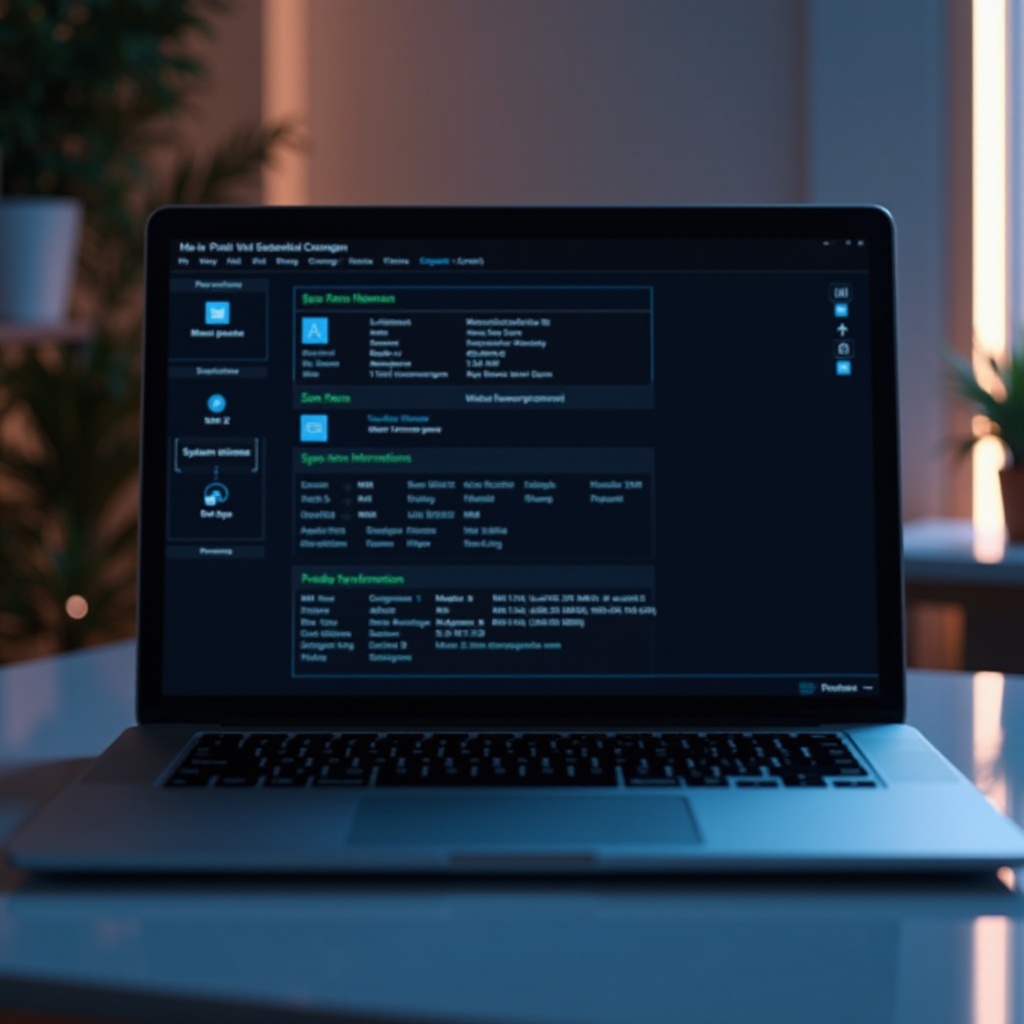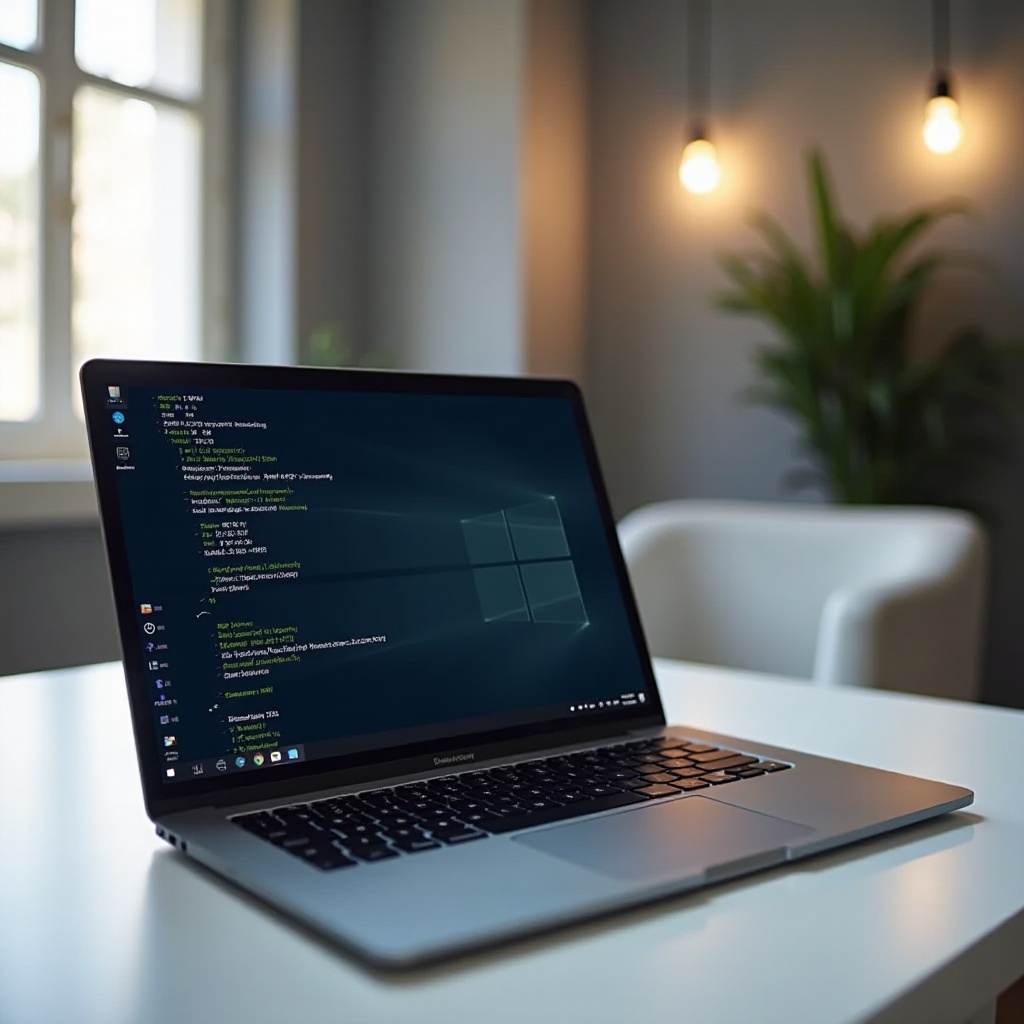Introduction
Understanding your laptop’s RAM is key to maximizing performance and identifying limitations. Whether your laptop is running slowly or you’re considering upgrading, knowing how to check your device’s RAM is crucial. This guide will walk you through checking RAM on Windows and macOS laptops, offer troubleshooting tips, and suggest performance-enhancing strategies. With this knowledge, you can ensure your laptop runs smoothly and meets your demands. Let’s delve into why RAM is critical for your device’s efficiency.

Understanding RAM and Its Importance
RAM, or Random Access Memory, is vital in managing your laptop’s active tasks and processes. It affects how effectively your laptop handles applications and multitasking. More RAM usually means smoother, more reliable performance. Laptops lacking sufficient RAM struggle with modern applications, causing delays and crashes. By diagnosing performance hiccups and understanding RAM’s role, you can make informed decisions about upgrades or troubleshooting. Proper RAM management extends the life and efficiency of your laptop.
Methods to Check RAM in Windows Laptops
For Windows users, determining your laptop’s RAM is straightforward with several accessible methods.
Using System Settings
- Click the ‘Start’ menu, then ‘Settings.
- Navigate to ‘System’ and select ‘About.
- In ‘Device specifications,’ find ‘Installed RAM’ to see your laptop’s total RAM.
This quick method offers a snapshot of your system’s key specifications.
Utilizing Command Prompt
- Open ‘Command Prompt’ by searching ‘cmd’ and selecting ‘Run as administrator.
- Enter
wmic memorychip get capacityand press ‘Enter. - The results, listed in bytes, can be converted to gigabytes for easier understanding.
Advanced users find this command-line method precise, offering detailed insights into RAM modules.

Methods to Check RAM in macOS Laptops
macOS integrates RAM checking seamlessly within its system tools.
Using System Information
- Click the Apple icon and choose ‘About This Mac.
- The overview displays ‘Memory,’ reflecting your RAM’s capacity.
This approach gives a clear view of your RAM’s structure and specifications on macOS.
Employing Terminal
- Access ‘Terminal’ via the ‘Utilities’ folder in ‘Applications.
- Execute
system_profiler SPMemoryDataTypeand press ‘Enter. - Detailed RAM information, including type, speed, and size, will be presented.
Terminal users appreciate the depth of details offered, ideal for diagnostics or upgrade evaluations.
Exploring Third-Party Tools for RAM Inspection
While built-in options are helpful, third-party tools provide expansive RAM analysis. Tools like CPU-Z for Windows or iStat Menus for macOS offer insights into RAM type, frequency, and configuration that standard tools may not. These programs are invaluable for users planning upgrades or troubleshooting hardware issues, ensuring compatibility and identifying potential performance bottlenecks. They enhance overall system inspections, vital for optimizing laptop performance.
Common RAM-related Issues and Troubleshooting
RAM problems can lead to slowdowns, frequent crashes, and poor multitasking. Diagnosing starts with checking RAM amount and usage to exclude insufficiency factors. Use diagnostic tools like Windows Memory Diagnostic or macOS’s built-in checks to identify faulty RAM. Keep your drivers updated and ensure software compatibility to prevent disruptions. Addressing RAM issues promptly prevents further system damage and maintains device reliability.
Upgrading Your Laptop’s RAM
Upgrading RAM is a cost-effective way to boost performance. Verify your laptop’s maximum capacity and confirm RAM module compatibility before purchasing. Some laptops allow straightforward RAM access, while others might require professional help. Match specifications such as type and clock speed for seamless upgrades. After installation, experience enhanced multitasking and application fluidity, delivering improved performance.
Additional Tips for Optimal Performance
Beyond RAM checks and upgrades, optimize your system with regular maintenance. Clear caches and unwanted files to free resources. Opt for lightweight software and manage startup programs to reduce RAM strain. Keep your operating system and drivers updated for efficiency. Monitoring memory usage helps identify irregularity. These proactive steps ensure lasting performance, maximize RAM utility, and extend your laptop’s lifespan.

Conclusion
Checking your laptop’s RAM is essential for managing its performance. With built-in methods or third-party tools, understanding your RAM can aid in troubleshooting or upgrading efforts. Following these strategies ensures your device operates efficiently, covering daily demands and future needs. With careful RAM management, your laptop remains dependable and effective.
Frequently Asked Questions
How can I increase my laptop’s RAM capacity?
You can increase RAM by purchasing compatible RAM modules matching your laptop’s specifications. Some laptops require professional installation.
What are signs that my RAM needs replacement?
Frequent crashes, blue screens, or slow performance during multitasking can indicate faulty or insufficient RAM.
Can I use third-party tools safely to check my RAM?
Yes, reputable third-party tools like CPU-Z and iStat Menus are safe and provide in-depth diagnostics.


